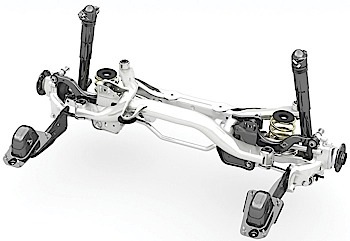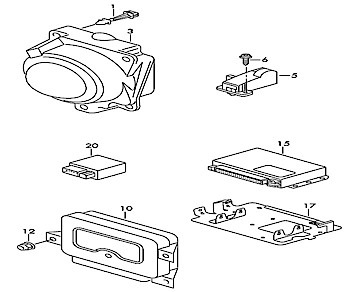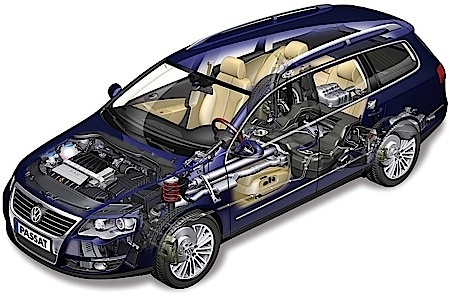The VW Passat for 2006 was completely new. The four-link front suspension with four ball joints was replaced with a cast-iron lower control arm and a McPherson strut. In the rear, the Passat received an independent suspension with a trailing link design. Also, the design of the AWD model was much more simplified. But, when VW simplified the suspension, it took away any front camber or caster adjustments.
The B6 Passat may seem like a “toe and go” vehicle, but if this approach is used, it could result in some unanticipated problems. Why? The alignment on this vehicle is critical to other systems on the car.
Pre Alignment
VW has a few recommendations before performing a four-wheel alignment.
- Tires are inflated to the correct pressure.
- Tread depth difference may be no more than 2 mm on an axle.
- The fuel tank must be full.
- Suspension, wheel bearing, steering and steering linkage checked for excessive play and damage.
Front Suspension
As mentioned previously, the front suspension uses a cast-iron lower control arm and McPherson strut. The only way to change the camber is to shift the cradle side-to-side. Shifting the front cradle requires loosing the bolts, and only small adjustments can be made. New bolts must be used because they Torque-to-Yield and stretch to create stable clamping loads.
If the camber or caster is out of specification, look for worn components such as control arm bushings.
Rear Suspension
In the rear, the toe and camber are adjustable. Toe can be adjusted with the factory-installed cam bolt on the lower transverse link. Rear camber can be adjusted by a factory-installed cam bolt in the upper transverse arm.
Post Alignment
The B6 Passat included options like lane departure warning and adaptive cruise control. It also has stability control standard. These features depend on two things to work. First, the car must be pointing straight ahead with the thrust angle and total toe within specifications. Second, the steering angle sensor must be sending the correct information. Without these two things, these advanced systems will not function properly.
VW recommends that the sensors for the adaptive cruise control be recalibrated after any toe (front or rear) or rear camber changes are made. The system uses a narrow radar beam that comes from a module mounted behind the VW emblem. If the vehicle has a thrust angle problem, the pull or the steering position sensor may not be calibrated properly and the beam may not be pointed in the right direction. To calibrate the radar sensor, you need a compatible scan tool and special VW calibration tools.
The same is true for the lane departure system. “Lane Assist” keeps the vehicle in a lane and warns the driver if they are drifting or have removed their hands from the steering wheel. Lane Assist also gently and continuously countersteers (Passat CC). Should the countersteering force not be enough to keep the vehicle in its lane, the driver is alerted by means of a vibration in the steering wheel. If the driver takes his hands off the wheel for eight to ten seconds, the system notices and there is an acoustic and visual signal in the instrument cluster that asks the driver to take over before the system is then switched off.
The camera is mounted in the rearview mirror mount. It also uses a steering torque sensor that is sensitive enough to detect the driver’s hands on the wheel. But, to make the system work, the vehicle has to steer straight and the steering position/torque sensor has to be properly calibrated. If the steering pull exceeds the force the countersteering can generate, the system will deactivate.
This also brings up another service — road force balancing and measurement of the wheels and tires. Use of a road force balancer can minimize forces in the tires and runout in the wheels to eliminate pulling conditions.














